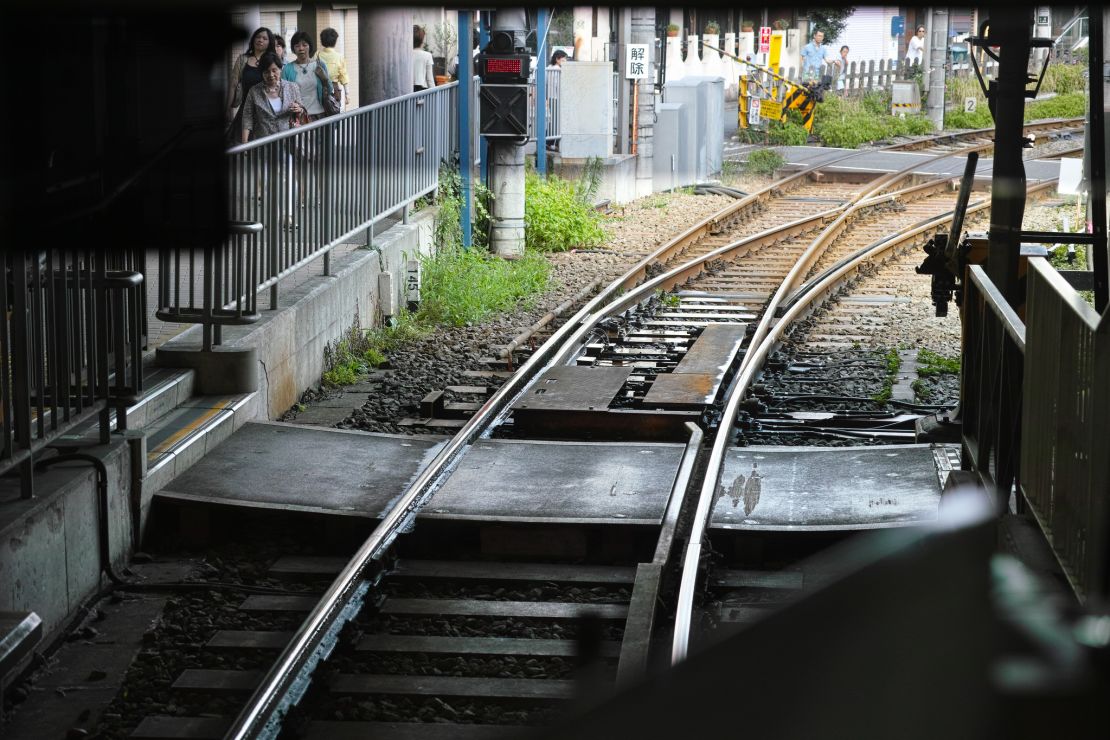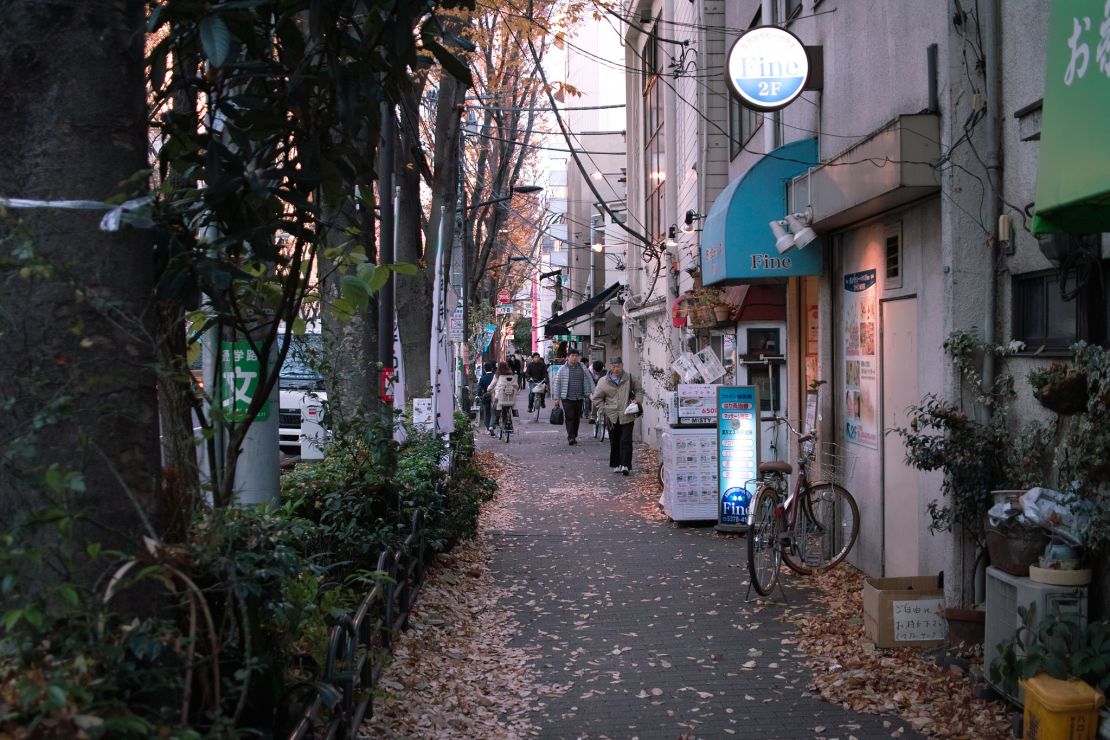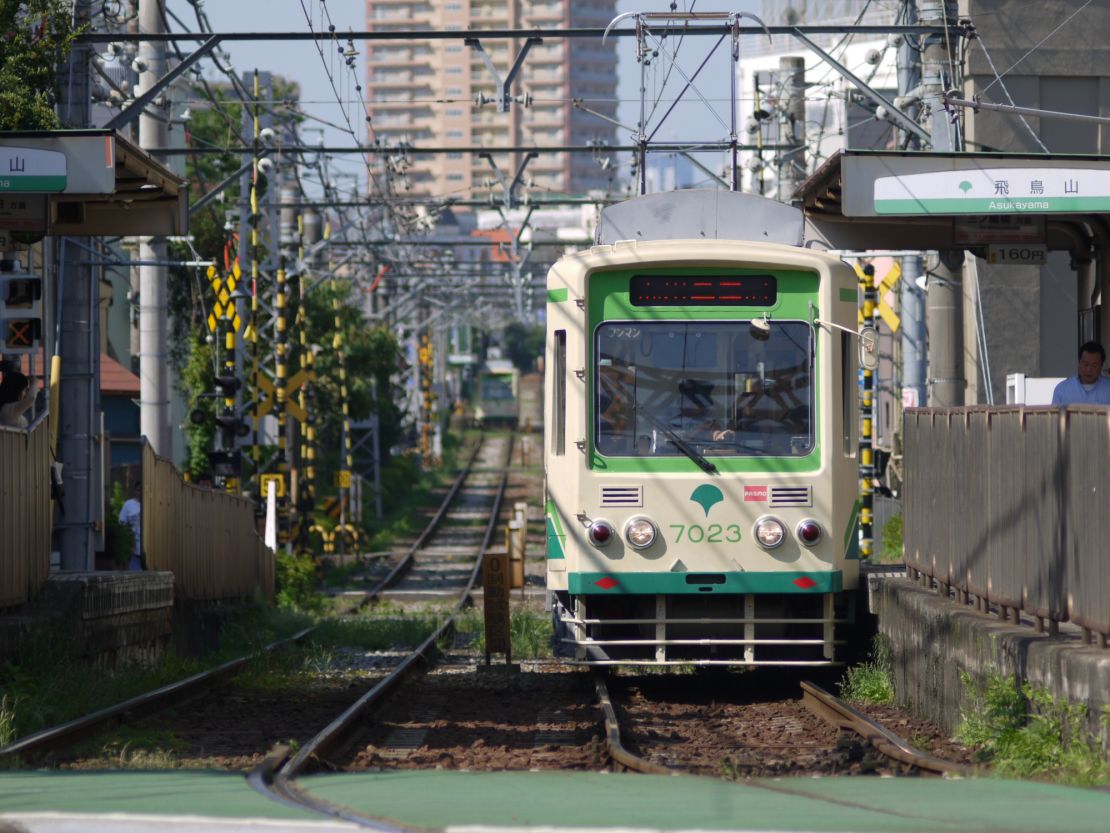By most measures, Tokyo is the biggest city in the world. For every well-known shopping, sightseeing or nightlife district – Shibuya, Roppongi, Asakusa – there are scores of neighborhoods that boast their own vibe but are nonetheless missed by the travel guidebooks.
We decided it was time to go off-course, pick five at random and simply go a-wandering:
1. Jindai Motomachi, Chofu
Recalling an old Edo village, Jindai Motomachi in western Tokyo is a relaxing day-trip devoid of bustling masses, or, you know, a place to pretend to be a samurai.
A short taxi ride from Chofu Station drops you at the main gate of Jindai Shokubutsu Koen (Jindai Botanical Gardens), where a wealth of plants, trees and flowers remind Tokyoites of what once was, in all seasons.
As you face the entrance to the botanical gardens, there is a path to the right, which emerges into a residential street; follow this round to the left at each fork, past large houses with a sleepy atmosphere, until you pass through a secluded cemetery dotted with gigantic trees and soundtracked by little more then birdsong … if you can remember what that sounded like.
After 10 minutes or so you will reach another entrance to the botanical gardens and several old-style soba noodle shops, one of which, Matsubajaya, has an open fire in the middle of the floor. Yes, in a wooden building.
Turn right here and follow the slope down to Jindaiji, the second-oldest temple in the Tokyo area, built in 733 to house a bronze statue of Buddha Shaka Nyorai.
The narrow street along which the temple’s entrance is found is full of shops selling traditional sweets and food to keep your sustenance up.
A stream gurgles parallel to the path, with tiny bridges leading to impressive-looking (i.e. pricey) restaurants and a still pond filled with swans and koi carp. If it’s a time-warp you’re looking for, Jindai Motomachi is the place to find it.
Chofu Station, Keio and Sagamihara lines, then No.34 bus or a 10-minute taxi ride
2. Shimotakaido, Setagaya Ward

Seemingly randomly slashed into north and south by an imposing rail crossing and attracting a young but funky crowd of residents thanks to a wealth of bars, cheap eateries, band rehearsal studios and more, Shimotakaido is kind of like the more famous “Tokyo Camden” of Shimokitazawa, but more homely.
Head out of the station and north of the tracks and you’ll stumble on a small indoor shopping street, crammed with stalls whose wares — fresh fish, homemade tofu, fruit and veg — spill out onto the covered street. Standing proudly on a corner just beyond this is Baobab No Ki, a small but well-stocked wholefood store.
All over Shimotakaido you’ll find stalls selling taiyaki, fish-shaped wafer cakes filled with azuki (red bean) paste and other treats.
Stomach still rumbling? For a more filling meal, cross the tracks south and then turn right and immediately left to find Italian restaurant Mushinosu (literally Bugs’ Nest – but don’t worry, they’re plastic), whose pastas and risottos are well matched to a lengthy wine list and reasonable prices.
Opposite Mushinosu, hipster haven Trashmundo is stocked floor to ceiling with cult vinyl and CDs, classic movies, vintage magazines from “Rockin’ On” to “Playboy,” collectors’ figures and more.
Film buffs can check out boutique theater Shimotakaido Cinema, just east of the station, for a selection of films handpicked to expand your movie trivia horizons.
Shimotakaido Station, Keio and Setagaya lines
3. Asagaya, Suginami Ward

Asagaya is a Tokyo jazz hotspot, with the Asagaya Jazz Streets Festival taking over the neighborhood for the last weekend of October. It’s also a haven for film buffs and chin-strokers, with revivalist theater Laputa specializing in 1950s-70s Japanese cinema.
Take the North Exit from Asagaya Station and turn left to explore Star Road, actually a collection of streets that are filled with hundreds of eateries, bars, and clubs that host live jazz, blues and world music. Many of these, such as Jamb Jamb, Yellow Vision and Manhattan, are barely large enough to fit a double bass, let alone many customers.
The scent of charcoal wafts from Buchi Yakiniku barbecue restaurant, while Don Tsucchi (at the far end of Star Road’s main thoroughfare) is almost as narrow as the strands of spaghetti it serves.
Record shop Rare, meanwhile, sells beautifully preserved collectors’ vinyl and bootleg music DVDs.
Turn left at Don Tsucchi to find Nigiyakana Kaze, a small shop selling cakes, ramen, bath salts and more, all made by disabled people in centers around Japan; this compact store also hosts live theater events.
South of the station you’ll find the covered Pearl Center arcade; during the first week of July, the local Tanabata festival sees the street adorned with striking paper lanterns, while the rest of the time it boasts gourmet spaghetti bar Meat-Ya and shops selling everything from material to tea, vintage toys to videogames.
Asagaya Station, Chuo Line
4. Shoto, Shibuya Ward
Though barely minutes from the action of Shibuya, Shoto is nonetheless a relatively unexplored neighborhood that is home to several delicious destinations. That’s right: Shoto is all about the food.
Take Shinsen Station’s North Exit and muddle your way north for five minutes, till you hit a main road; or approach the same street from Shibuya, turning left off Bunkamura-Dori when you reach Don Quijote and Tokyu department store.
From the Shinsen end, the first and most fun eatery you’ll come across is Junkadelic Jalopy! This tiny and self-exclaimed branch of the Junkadelic chain serves gorgeous Tex-Mex grub in a laid-back tumbledown shack — very bohemian.
Behind the main street lies Arossa, an Australian wine bar and grill twinned with a New Zealand-style branch in Ginza. The wine menu is extensive and varied, there’s plenty of fresh cheese, and the grilled crocodile is worth getting your teeth into.
Back on the main thoroughfare, Ivy-covered eatery Galettoria serves, unsurprisingly, French galette pancakes, which come loaded with organic fillings.
Shinsen Station, Inokashira Line
5. Minowabashi, Taito Ward

Locals bring color and a friendly feel to the arcade in Minowabashi. The Arakawa Line tram is a dinky one-carriage conveyance that trundles from Waseda in northwest Tokyo to Minowabashi in the east with a “ding-ding” as it departs, for a flat rate of $1.40 (¥160) for adults and $0.70 (¥80) for concessions.
Fittingly, Minowabashi Station is not much of a station at all; more a pair of outdoor alighting and boarding points set around a quaint square speckled with rose beds, Showa Era advertisement posters, plenty of pigeons and a handy bilingual map.
Head through the wooden archway and go straight to the main road, Nikko Kaido, established in 1617 as one of the five routes of Edo.
Cross over and you’ll see Sound In Mitsui, a music store run by a family since the 1920s that stocks both pop CDs and musical instruments; the real treasure trove is a comprehensive selection of enka (ballads) albums that are even available on cassette, with a set of magnifying glasses for older customers to browse with.
Heading north, Nikko Kaido leads all the way to Senju Bridge, rebuilt in 1921 to replace the 1594 construct that was the first ever to bridge the Sumida River.
The street is also lined with temples and shrines, each with its own cemetery; the most striking of these structures is Entsuji Temple, whose collection of unusual statues includes a vast effigy of Kannon, the Buddhist goddess of compassion, mounted on the roof.
One block north from Minowabashi Station, running eastwards parallel to the tramline, the covered Joyful Minowa Shopping Street should be your final stop.
Stock up on everything from fresh produce to traditional Japanese sweets, tools to stationery; rice specialist Minoriya sells grains from around Japan, polished while you wait or simply sold unrefined for extra health value. And if all that walking has exhausted you, the public bath midway down the street will soak it up in no time.
Minowabashi, Arakawa Line
Editor’s note: This article was previously published in 2011. It was reformatted, updated and republished in 2017.



















